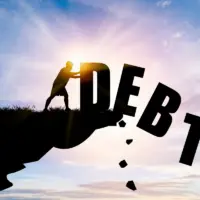Understanding Secured vs. Unsecured Debt

In a world that revolves around debt, it can be easy to get sucked into a situation where your debt becomes more overwhelming than you can manage. Before you start breaking down that mountain of debt, it’s important to understand what you’re working with.
Debt comes in two forms: secure and unsecured debt. Understanding the difference between both, how they will impact your life, and how they can influence your financial decision is critical in any debt management or debt repayment plan you might be working with. Let’s go over the details of what these two types of debt are and how they can impact you.
If you need guidance through your finances and are considering bankruptcy, it’s important to understand your current debt and how you can move forward financially, whether or not you pursue bankruptcy. At the Law Office of Taran M. Provost, our legal team is committed to helping you understand your legal options and responsibilities when it comes to bankruptcy. Contact us today to schedule your initial free case consultation.
What Is Secured Debt?
As the name suggests, secured debt is debt that is backed up by an asset that helps to guarantee the debt. That asset act as collateral, and if an individual fails to repay their debt or defaults on their loan, the lender can acquire the collateral as a way to recoup their losses. Collateral can take on many forms and can include cash assets, property, vehicles, and other assets a lender is willing to accept as collateral.
Because of their backed security, secured debt is often offered at a more competitive interest rate and competitive financing terms. Additionally, this type of debt comes with less strict qualifying requirements such as having a high credit score.
Examples of Secured Debt
One of the most common types of secured debt available to consumers is a secured credit card. Secured credit cards work like traditional credit cards in that a borrower can use the credit card and pay back the money they accrued along with an interest fee at the end of every month.
However, secured credit cards require that a security deposit be opened beforehand. This security deposit is a predetermined amount agreed to by the borrower and lender and can range from anywhere from $50 to a couple of hundred dollars. Secured credit cards are a great way for individuals with no credit to begin building their credit.
Mortgages and auto loans are other examples of secured debt. When an individual takes out a mortgage or an auto loan, the bank or lending dealer will hang on to the deed of the home or the title of the vehicle until the debt is paid back. If the borrower defaults on their payment, the mortgage lender or auto lender will foreclose or retake possession of the asset as collateral.
What Is Unsecured Debt?
Unsecured debt is not backed by any collateral. If a borrower fails to pay back their debt, the lender will have to be proactive in their response to recoup their losses. This is done through working with collection agencies, selling off the debt at a loss, or initiating a lawsuit to collect their payment.
Because of the risky nature of an unsecured debt, lenders will typically have stricter lending regulations including higher interest rates and more rigid qualifying criteria.
Examples of Unsecured Debt
Examples of unsecured debt can include Individuals who seek out personal bank loans. In order to qualify for a loan, a bank may consider your debt-to-income ratio, your trustworthiness to pay back the loan in a timely manner, and of course your credit trustworthiness.
Other types of unsecured debt can include medical debt, retail credit card debt, and other agreements made with retailers including gyms, childcare establishments, and other business establishments where a contract and financial agreement is drawn up.
Which Is Better: Secured or Unsecured Debt?
Which type of debt is better boils down to the individual and their circumstances. For a lender, secured debt is better because it gives the lender collateral to fall on if a borrower defaults on their loan. On the other hand, a borrower might find secured debt to be intimidating because they lose an asset if they default.
Overall, the best type of debt is the kind that you can successfully take control of and pay off so that it does not lead to other detrimental financial outcomes. A common outcome individuals who carry debt may struggle with include bankruptcy. Secured and unsecured debt are treated very differently in bankruptcy, so it’s important to discuss your entire debt portfolio with your bankruptcy attorney to make sure you get the best outcome in bankruptcy, eliminating the greatest amount of debt while protecting the property that is most important to you.
When to Speak With a Bankruptcy Attorney
At the Law Office of Taran M. Provost, our team is committed to helping clients navigate their financial standing to determine if and what type of bankruptcy might be their best option. To speak with an experienced legal professional about your case, contact our office today for a free consultation.